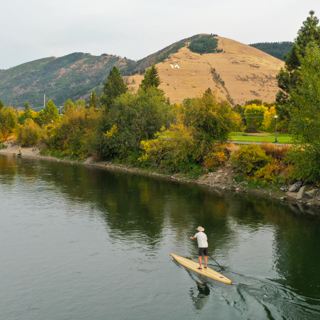Necessity of the River Center
The need for the Center is based on the following conditions:
1. Over the last century in Montana (three centuries in most of the United States and thousands of years in many areas of the world) streams have been manipulated to serve the growing population. Only recently has the importance of streams as drivers of the biodiversity of landscapes been recognized. As a result, efforts are being undertaken to restore streams, their fishery and floodplains. Work to date, however, has focused solely on stream channel design and mechanics. A holistic approach to stream re-naturalization including groundwater exchange, geochemical cycling, and establishment of appropriate ecological processes and systems is missing. In Montana alone, millions of dollars are being spent annually to rehabilitate rivers, yet long term consequences of rehabilitation efforts remain un-assessed.
2. Nationally, over 900,000 miles of streams are impacted.
3. New technology needs to be developed to make river re-naturalization more affordable.
4. The re-naturalization of impacted stream systems and maintenance of intact river systems from a state and national perspective is of economical, sociological and ecological importance.
Montana has 176,750 miles of rivers including the headwaters of the Columbia, Mississippi, and Saskatchewan river systems. It is estimated that 8,900 miles of Montana streams are in poor condition; over 1,300 miles are directly impacted by mining. In 2001, the 2,500 mile long Missouri River was ranked the most endangered river in the United States. Nationally, more than 235,000 river miles have been channelized, 25,000 miles dredged, and more than 600,000 miles are impounded behind dams. In Montana, over $80 million is committed to re-naturalization of mining impacted streams in western Montana, and state and federal land management and fishery projects are spending over $2 million on stream improvement annually. Similar numbers nationally are not available, however, it is anticipated that over the next century the United States alone will expend from state, private, and federal sources in excess of one billion dollars annually. For example, the CALFED project addressing river deterioration in the Sacramento Delta region of California spent $195 million of joint state-federal dollars in 2001. CALFED plans to continue this effort for several decades. Current river restoration projects, though traditionally engineered, often lack a holistic systems approach. The CRSSR is designed to commit resources towards assessing outcomes of past, on-going, and future projects, and developing innovative and sound methodologies that will improve re-naturalization outcomes, maintain healthy streams, and improve cost benefit ratios.
